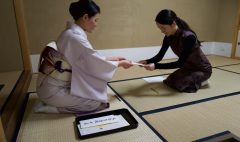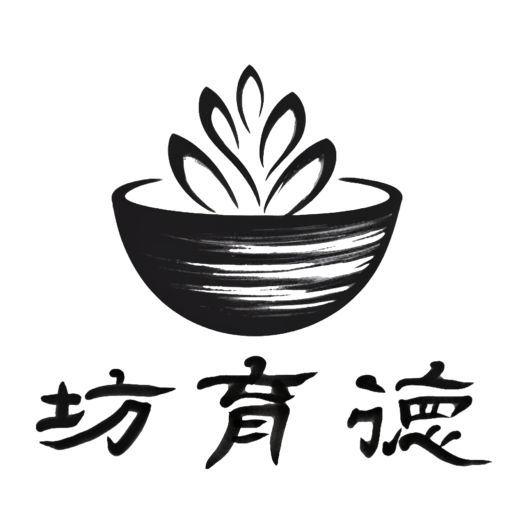如何做到没有念头?how to achieve no thoughts?
December 28, 2024 2024-12-29 18:42如何做到没有念头?how to achieve no thoughts?
How Can We Achieve a State of No Thoughts?
Most of us are constantly troubled and controlled by our thoughts. During the day, while engaged in various activities, it might seem as though we are consciously controlling our words and actions. However, in reality, we are often under the influence of our thoughts. It is only when we sit down to meditate or practice mindfulness that we realize our minds are overwhelmed by countless, uninterrupted thoughts.
These thoughts are always present; we just fail to notice them. Even during meditation, when we try to stay aware, we often get carried away by them. This “getting carried away” occurs when a single thought triggers specific emotions. These emotions fuel the thought, causing it to grow and evolve, trapping us in an emotional vortex.
The way to counter this is to observe thoughts without feeding them emotional energy. When ignored, thoughts become “bored” and gradually leave. By practicing awareness, our thoughts slow down and decrease, eventually leading us toward a state of “no thought.”
However, no-thought doesn’t mean complete unconsciousness. For instance, we might shift our awareness to a specific part of the body. This practice, known as Raja Yoga, involves focusing consciousness on a single point. By doing so, the mind has no space to generate thoughts. For example, you might focus on your fingers, feeling the sensations of raising and lowering them. This is a form of concentration practice.
It’s important to note that concentration exercises are not suitable after 7 PM, as they might overstimulate you and make it difficult to sleep. Whether focusing on the upper dantian, lower dantian, or fingers, these exercises are best practiced during the day.
Concentration practice helps maintain a single thought until even that thought disappears, allowing us to enter a state of no-thought. Some may define this state as enlightenment.
How Can We Achieve No-Thought?
Many people spend decades or lifetimes trying to achieve no-thought but fail—not due to a lack of effort but because they lack specific methods. Start by meditating for 10 minutes today, observing and counting the thoughts that arise. This helps cultivate heightened awareness.
However, during meditation, it’s common for the body to remain still while the mind plays stories or movies, getting carried away by thoughts. To progress, we must monitor the quality of our meditation. Without such monitoring, even decades of practice might yield little improvement.
The Essence of the Tao Te Ching’s Practices
The practices distilled from the Tao Te Ching are simple and easy to understand. However, sustained practice that leads to significant results is extremely rare. The key is the correct method.
The phrase “The greatest truths are the simplest” often feels like a slogan. Initially, we must embrace complexity, accept difficulty, and practice diligently. Only then can we understand why simplicity is profound. This realization isn’t a mental concept but a felt experience or bodily sensation.
I hope everyone can dedicate themselves to more practice and truly benefit from it.
If this article has helped you, feel free to like, save, and share it! Wishing you all the best, and thank you for reading!
如何才能做到无念?
大部分人常常被念头困扰,也被它控制。白天做事情时,看似我们在主动控制自己的言行,但实际上,念头在暗中操控着我们。只有在坐下来冥想或打坐时,我们才会发现头脑中密密麻麻的念头无缝隙地充斥着,非常多。
这些念头其实一直存在,只是我们没有察觉到。即使在打坐时,当我们试图保持觉察,念头仍然常常将我们带跑。这种“被带跑”指的是,一个念头引发特定情绪,而情绪又成为念头的能量来源,让念头不断发展延伸,最终让我们陷入情绪的漩涡。
唯一的办法是觉察到这些念头,但不为它们提供情绪能量。这样,念头会觉得“无聊”,慢慢离开。通过练习觉察,我们的念头会越来越少,越来越慢,最终接近“无念”的状态。
然而,无念并非完全没有意识。例如,我们可以把意识集中在身体的某个部位,这也是一种练习,叫做Raja Yoga(王瑜伽)。这种练习将意识专注在一个点上,让头脑没有空隙生起任何念头。例如,可以把注意力放在手指,感受手指的举起与落下,不断觉察这一点。这就是一种专注力练习。
值得注意的是,专注力练习不宜在晚上7点后进行,因为可能会让我们太兴奋而无法入睡。无论专注于上丹田、下丹田,还是手指,这种练习适合白天进行。
专注练习可以帮助我们保持“一念”,直到这一念也消失,我们进入完全无念的状态。许多人将这种状态定义为“开悟”。
如何达到无念?
许多人修行几十年甚至一生也无法真正做到无念。这不是因为不够努力,而是缺乏具体方法。建议从10分钟的打坐开始,觉察并数数升起了多少念头。这样,我们才能保持高度觉察。
然而,很多人打坐时身体虽静,头脑却在“演故事”或“放电影”,不断被念头带跑。因此,必须找到方法监控打坐的质量,确保不断进步。如果没有这种监控,即使修行数十年也难有显著进步。
《道德经》的练习精髓
《道德经》中所有练习提炼出来都简单易懂,但真正坚持下去并取得成果的人极少。关键在于正确的方法。
“大道至简”对大多数人来说只是口号。我们需要接受最初的复杂与困难,努力练习,调整和纠正自己,最终才能体会到为什么大道至简。这种体悟不是头脑中的概念,而是一种感受或身体体验。
希望大家投入更多练习,真正从中受益。
如果这篇文章对你有帮助,欢迎点赞、收藏、转发!祝福大家,感谢阅读!










